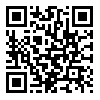year 1, Issue 3 (9-2002)
J. Med. Plants 2002, 1(3): 51-59 |
Back to browse issues page
A Fotouhi *1 
 , F Asghari2
, F Asghari2 
 , A Mirzazadeh2
, A Mirzazadeh2 
 , F Alaedini2
, F Alaedini2 
 , K Yazdani2
, K Yazdani2 
 , A Arya2
, A Arya2 
 , A Safaei2
, A Safaei2 
 , J Vafadar2
, J Vafadar2 


 , F Asghari2
, F Asghari2 
 , A Mirzazadeh2
, A Mirzazadeh2 
 , F Alaedini2
, F Alaedini2 
 , K Yazdani2
, K Yazdani2 
 , A Arya2
, A Arya2 
 , A Safaei2
, A Safaei2 
 , J Vafadar2
, J Vafadar2 

1- Cardiovascular Research Center, Tehran University of Medical Sciences , afotouhi@sina.tums.ac.ir
2- Cardiovascular Research Center, Tehran University of Medical Sciences
2- Cardiovascular Research Center, Tehran University of Medical Sciences
Abstract: (10727 Views)
Anethum is a herbal drug production and prescription of which, as a lipid lowering drug, has been approved in Iran. Its widespread use and lack of studies done on it emphasizes on the necessity of a controlled clinical trial. Two hundred and one hypercholesterolemic patients (total cholesterol >240 mg/d) diagnosed on basis of two consecutive lab tests, separated by at least two weeks, comprised the study population. Patients were randomized into the following therapy groups after 2 weeks of diet therapy: 1) Cholestyramine 12 g per day, 2) Nicotinic acid 3 g per day, 3) Cholestyramine 12g per day plus Nicotinic acid 3 g per day, 4) Anethum 6 tablets per day, 5) Placebo. One hundred and fourteen patients completed the 2 months follow up. A third lab test at the end of the course revealed a 2.0% reduction of cholesterol level in the anethum group. Triglyceride had %3.1 rise in anethum group (not significant). Low density lipoprotein cholesterol (LDL-C) was increased by 6.1% in the anethum group (not significant). The most common side effects of anethum were non specific complaints (i.e. malaise and fatigue). One patient discontinued therapy because of abdominal pain. Anethum caused a 2.2 mg/dl rise in blood urea nitrogen (P=0.016) and 0.12 mg/dl rise in creatinine (P=0.019). Based on the results, we conclude that anethum is not significantly different from placebo in its therapeutic effects, moreover there are clinical evidence on its untoward effects by increasing LDL-C. Although this study hasn’t proved untoward effects of anethum statistically but showes lack of any beneficial effects.
Type of Study: Research |
Subject:
Pharmacology & Toxicology
Received: 2001/04/15 | Accepted: 2002/07/5 | Published: 2002/09/3
Received: 2001/04/15 | Accepted: 2002/07/5 | Published: 2002/09/3
| Rights and permissions | |
 |
This work is licensed under a Creative Commons Attribution-NonCommercial 4.0 International License. |

